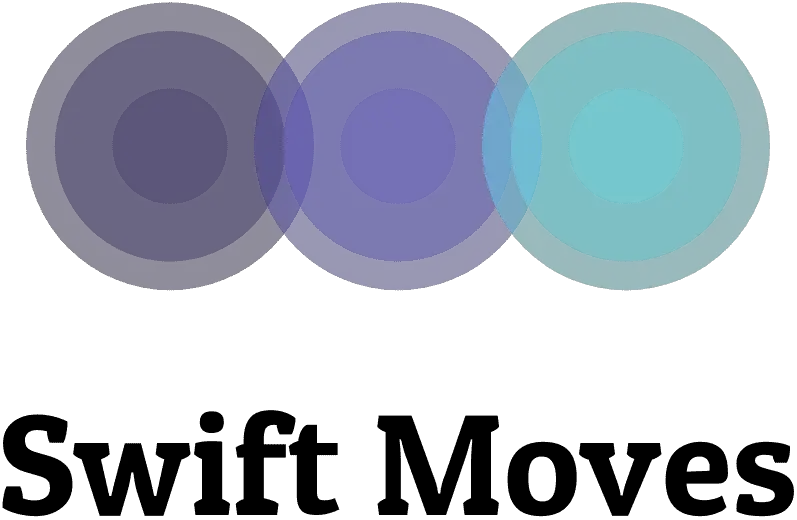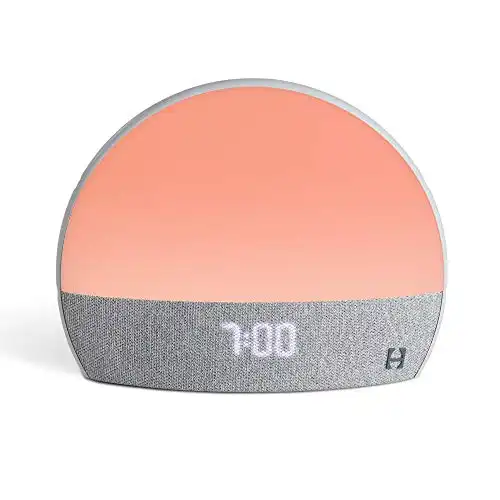Summary
Hatch Restore and Philips SmartSleep are two of the most popular sunrise alarms available. Both products are significant upgrades from a basic alarm clock, and provide features to make your wake-up routine more enjoyable.
Hatch Restore comes with a high price tag, but is the most feature-packed and functional wake up light we have tested yet.
Philips SmartSleep is not just one device, but rather a whole lineup of sunrise alarms. The cheaper products in the lineup tend to be poorly built and lacking in features, while the premium products seem overpriced considering their imperfect design. However, they have a large number of devices, so there is one to fit every budget. And the Philips brand offers good support, reliability, and warranties.
~~~ Overall winner: Hatch Restore [Check Price] ~~~
A primer on Philips SmartSleep products
Writing about Philips SmartSleep products is terribly confusing. Philips SmartSleep products include not only sunrise alarms (which we will cover in this article), but also snoring relief bands, deep sleep headbands, sleep apnea devices, and a “better sleep” program.
Within the Philips SmartSleep sunrise alarm lineup, there are three different wake up lights.
- Base model: Philips Wake Up Light HF3500/60 (also called the Wake-Up Alarm Clock with Sunrise Simulation)
- Base model with a built-in FM radio + nature sounds: Philips Wake-Up Light Alarm Clock with Radio HF 3505/60.
- Mid-range: Philips Wake-Up Light Therapy Alarm Clock HF3520/60
- High-end: Philips SmartSleep Sleep & Wake-Up Light HF 3650/60
- High-end with app integration: Philips Sleep and Wake-Up Light Therapy Lamp HF3670/60 (also called Philips Somneo)
Features: Hatch Restore vs. Philips SmartSleep
Hatch Restore is feature-packed, with a sunrise alarm, sound machine, lamp, traditional alarm clock, and meditation app in one device. The device is very customizable. Users can change the color of light, steps in their bedtime routine, sounds, and the clock display brightness. The big downside, in terms of features, is that Hatch only allows full access with a paid subscription.
Another disadvantage to the customization is that it causes Hatch Restore to be dependent on the app. For example, to turn off all the lights on the Hatch, you need to use the app to dim everything to zero. For a device that sits on your nightstand, it is aggravating to be tied to an app. When you wake up in the middle of the night, the last thing you want to do is use an app to turn on a clock display.
In many sunrise alarms we have tested, it is impossible to turn off all the lighting on the device. Thankfully, Hatch can be adjusted so that there is no light being emitted.
While the Hatch Restore packs a lot of features into an app-powered product, the Philips SmartSleep line scores points for having simpler devices with less app dependence. Of the Philips products listed above, only one (HF3670/60) is dependent on an app to function. The others can be operated entirely with buttons on the device.
We love the simplicity and price of the Philips base model (HF3500/60), but it does feel cheap and lacking in user-friendliness at times. To begin, while it has a sunrise alarm, it lacks a sunset feature. Most other sunrise alarms on the market also have a sunset feature. And the audio (beep) alarm can’t be silenced, so you are stuck waking up to a blaring alarm alongside the wake up light.
The Philips mid-range wake up light (HF3520/60) allows you to turn the audio alarm off, and wake up to the light only. It provides more brightness adjustment settings, and offers auto-dimming to adjust to the room’s lighting.
The high-end Philips SmartSleep comes in a version with no app (HF3650/60) and an app-connected version (HF3670/60). Both of these products offer relaxation sounds, as well as a built-in port that allows for charging a phone. There is more customization allowed, including sunrise color options, breathing routines, and a sunset feature.
~~~ Features winner: Hatch Restore [Check Price] ~~~
Design: Restore vs. SmartSleep
Hatch Restore has a nicer design, and it isn’t even close. Hatch has a rounded appearance, with smooth edges and a fabric covered base. It looks like a device that was designed with sleep and relaxation in mind. The digital clock is crisp enough to be readable, but has blurred edges and projects from behind the fabric. This gives it an easy-on-the-eyes look that is reminiscent of an E-reader. You can adjust the clock brightness, and also program it to turn off during certain times.
My only real complaint with the design of the Hatch Restore is that the subtle design of the buttons makes them challenging to locate. This is especially true when the room is dark. Another small gripe is that the main touch sensor on the device isn’t capable of turning the light on/off.
Hatch has no battery backup, but it will save settings for whenever the power returns.
Philips SmartSleep products all have very different designs. The base model (HF3500/60 Wake-Up Light Therapy Alarm Clock) looks like a CD player alarm clock you would have seen in a dorm room twenty years ago. The mid-range (HF3520/60) looks like a huge light bulb with a digital clock on it. (For the record, the round shape of the device makes it easy to accidentally knock off of a bedside table). And the high-end product (HF3650/60 & HF3670/60) is an awkward looking device that is hard to even explain. My best description so far is that it looks like an illuminated toilet seat.
In addition to the dated design, the base model Philips feels cheaply constructed. It has no battery backup, and the clock can be dimmed but not turned off entirely. Likewise, the mid-range Philips does not allow you to turn the clock off entirely. And while it includes a battery backup, it is very limited and doesn’t do much to help the device function. The high-end Philips product adds a better battery backup, as well as an aux port that lets you turn the SmartSleep into a speaker. Our complaint here is that, despite the aux port, you cannot use your own music as a wake-up song. The touchscreen is prone to glitches, and was frustrating to operate during our tests.
Neither Hatch nor Philips has replaceable bulbs. But, since the bulbs typically last 20,000+ hours, this shouldn’t be an issue.
~~~ Design winner: Hatch Restore [Check Price] ~~~
Sound: Hatch vs. Philips
Hatch Restore has high sound quality. There are many choices of sound available, such as white noise and nature sounds. Unfortunately, the device cannot be used as a bluetooth speaker.
The base model Philips has no sound options except for the beep alarm. The upgraded version (HF3505/60) also has an FM radio and 2 available nature sounds.
The mid-range Philips has an FM radio, along with 5 nature sounds.
The high-end Philips has 10 sound options, an FM radio, and adds relaxation sounds. The sound quality is significantly worse than the Hatch Restore.
~~~ Sound winner: Hatch Restore [Check Price] ~~~
Software & Apps: Hatch vs. Philips
The Hatch app provides many options and room to customize. As mentioned above, a paid subscription is required to unlock all features. Currently priced at $50/year, this feels like an unreasonably high price to pay.
Because Hatch gives you so many options, the device requires app usage in order to be fully functional. So, if you are looking for something that can be fully used without an app, one of the Philips SmartSleep products may be more appropriate. Although the Philips wake up lights feel unsophisticated compared to competitors like Hatch and Lumie, we should give them credit for their simpler operation.
The base model Philips has no multiple day alarm scheduling. The mid-range and high-end Philips also lack multiple day alarm scheduling, but at least give you the option to set two different alarms. So, you can set a “weekday” alarm and a separate “weekend” alarm on the mid-range and high-end Philips.
If you want an app-connected Philips, the high-end HF3670/60 (“Philips Somneo”/SmartSleep Connected Sleep and Wake-Up Light) is your only option. The app requires location access, which seemed odd. Although the app caused some occasional frustration during testing, it was nice to have access to more information, adjustments, and customization.
~~~ Software & Apps winner: Hatch Restore [Check Price] ~~~
Lights: Restore vs. SmartSleep
Overall, the Hatch Restore is our favorite wake up light that we have tested so far. The sunrise alarm is bright, high quality, and customizable. Spending this much money on a bulb that can’t be replaced still feels wrong, but it is typical with sunrise alarms. And, as mentioned above, a 20,000+ hour lifespan on the bulbs means that bulb failure is unlikely to be the reason you replace the product.
The base model Philips has a limited light, with a sunrise feature but not a sunset. In addition, there is not much color range. Instead, the sunrise progresses from a dull yellow to a bright yellow. But we should point out that it is one of the cheapest sunrise alarms available, and from a reputable company.
The mid-range Philips has both a sunrise and a sunset feature, and is higher powered than the base model. It also provides more hues, as the sunrise progresses from red, to orange, to a bright yellow.
The high-end Philips also has a sunrise and sunset feature. It has a stronger light, with more brightness settings and a large amount of customization available.
Another advantage the Hatch provides is that it has “blackout” capabilities. The device can be adjusted to emit no light. The Philips, however, will always produce some amount of light from the digital clock, even when the brightness settings are adjusted to low. For 90% of people, this won’t be an issue. But for those of us that sleep best in total darkness, it seems like a needless design flaw.
~~~ Lights winner: Hatch Restore [Check Price] ~~~
Warranty & Customer Support: Hatch vs. Philips
Hatch provides great customer service, with a free return window of 60 days. Likewise, Philips has good customer service, and with a longer free return window of 90 days. Philips wins in this category, though, for having a 2 year warranty. Hatch, on the other hand, provides only a 1 year warranty.
~~~ Warranty & Customer Support winner: Philips SmartSleep [Check Price] ~~~
Final Thoughts
Simply put, Hatch Restore may be the best sunrise alarm on the market. It has every feature you could need, combining a sunrise alarm with a traditional alarm, digital clock, night light, and sound machine. However, the premium product comes with a premium price.
Philips SmartSleep has a range of products, so it may be easier to find a product that works for your budget. The base model is less than half the price of the Hatch Restore, while the high-end model with app connection is more expensive than Hatch. Because the Philips wake up lights have more design flaws, and poorer function, our recommendation is to purchase Hatch if your budget allows.





